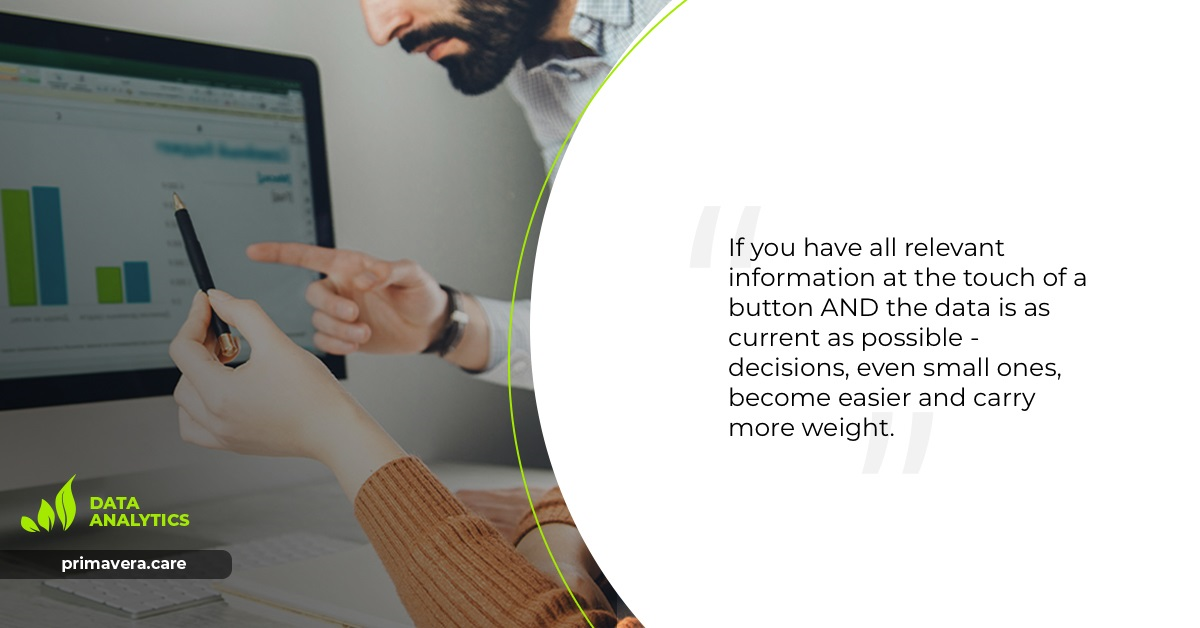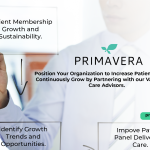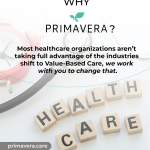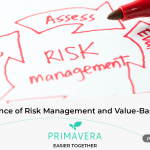The demands on the healthcare industry are growing; hospitals and practices are tasked with innovating new ways, not only to organize and communicate, but to increase positive patient care outcomes. In our modern world, the answer is simple; don’t just treat the patient in the moment – plan for every aspect of their care journey while reducing risk along the way.
How is Data Analytics used in a medical practice?
Traditional data analytics is true to the image you conjure in your mind when someone says the words, “data analytics”. A tedious, data-heavy system, often delayed by it’s limited processing power…and probably housed in a basement somewhere.
The critical error with these OG data systems is that it affects your decision making. Data isn’t just meant to be stored, it can be used. But if you’re making decisions based on old data, or incomplete information then the system needs work.
What you should look for:
- Easy to use – a simple interface that guides you through adding patient information
- Real time – synchronized updates from hospitals, insurance companies, and providers
- Cost management – cost analysis features, centralized info for multiple payors
- Reports and Metrics – a smart system that analyzes your data for you
- Usage – track pharmaceuticals for each patient
- Risk Management – risk analysis per patient based on all submitted data
Real-Time Analytics and Reducing Risk: Industry Game Changer
The shift from traditional data analytics to real-time analysis is nothing short of a revolution.
The premise is simple – view the patient’s entire history, input other contributing factors, and gain visibility on their outcome. This new approach to data can be harder than it seems to accept, especially if practitioners are working in the trenches, focused on acute care and unable to zoom out and gain perspective.
Here’s how real-time analysis helps in an acute setting:
In a study conducted by the University of Chicago Medical Center (UCMC), real-time data was applied to understand and reduce operating room delays and prevent cardiac arrest among high-risk patients.
Data strategies helped manage workflows by sending alerts and notifications between teams and at shift-changes. Turnover time decreased by 15-20% (about 4 minutes per room), as a result of using the data. In terms of dollars, this equaled up to $600,000 annual savings in operating margins.
Minutes are worth a lot of money. With a large patient pool, real-time data not only improves quality of care but significantly reduces cost. And though this example is case-specific to a hospital setting, imagine the benefits towards a non-profit healthcare facility.
Issues, Strategies, and Resources
Let’s talk about Risk Management.
Primavera’s data analysis turns information into actionable data with a number of interactive resources. With Risk Management, patient care is managed based on the most recent and urgent data available.
Risk management can’t just be a point A to point B iteration. Managing and reducing risk in healthcare benefits from predictions updated step-by-step throughout the patient’s journey – so the system is constantly updating based on prognosis, treatment, and patient response.
Patient Case Management and Reducing Risk
Prioritizing patients is becoming more and more crucial so determining which patients are in need of critical care is a main asset of data analytics.
How does this work?
By managing metrics, the data system creates hierarchy for patients at risk. This is based on different factors that investigate each patient’s health profile and rank them according to urgency while also detecting outliers, high risk patients, and high utilizers. As patients progress through their care, the system updates and re-ranks.
Intelligent Analysis at Your Fingertips
Comprehensive views are a big part of data analysis, so the system also factors in administrative data.
- Funding PMOM
- Inpatient/outpatient Claims PMPM
- Medical Loss Ratio (MLR)
- Profitability Driver: MRA
- Enrollments, Churn, and Retention
With everything together in one accessible format, developing a patient care strategy that benefits your practice at an organizational level is simplified.
The Primavera Healthcare Suite breaks this big data approach down into three phases:
Collect – Data entry is simplified in a guided, uniform format. Open your computer, and everything is accessible by easy to navigate categories. Everything automatically populates in real-time, and is accessible across teams.
The Healthcare Suite is a centralized information hub that facilitates communication and coordination between practices, providers, pharmacies, and patients but also lets you track prescriptions, patient usage, and logs communications.
A key bonus to Primavera is that it was developed by healthcare industry professionals so the infrastructure reflects the observed needs of practitioners and healthcare organizations.
Analyze – Access all your reports and metrics instantly and sort, filter, and apply that information in any way you like. Organize by patient, payor, provider, or urgency level and toggle between views. Reference easy to read charts for quick analysis or dive deep into the data to investigate outliers and patient anomalies.
A breakdown from multiple perspectives makes it easier to respond to red flag situations and – like with the UCMC study – reduce potential costs while boosting patient care and response time.
Act – Big data – understand current and future costs with real-time data across your patient population and key metrics. Utilizing data equals better decision making.
This is due to the real-time syncing features of Primavera’s Healthcare Suite. If you have all relevant information at the touch of a button AND the data is as current as possible – decisions, even small ones, become easier and carry more weight.
Primavera’s data analytics also saves time by eliminating the need for investigation into patient history via outdated data systems and bridging communications between all parties.
The Future of Data Analytics
Real-time data is the future of healthcare organization so let’s make it Easier Together. Get the information you need exactly when it’s needed. Manage multiple payors, use current and historical healthcare data, and ease communication; from reaching out to patients, to scheduling transportation and updating your team.
See how simple elevating your practice can be and schedule a demo today!








Recent Comments